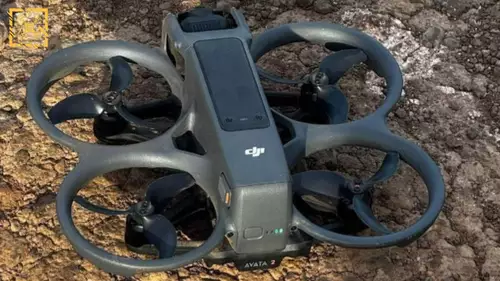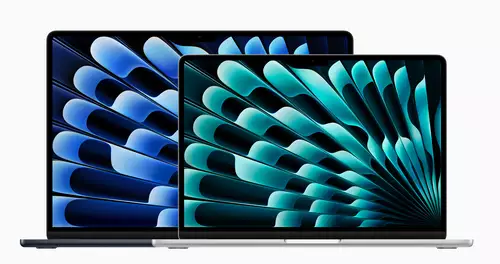Frage von Wernerh:
Hello ...
If I do DV editing of HD material of my vacation videos
I ask myself what the end-format ...
For HD TV MPEG4 seems to be a solution to be good.
How to archived s.besten but already cut material, so that it can, if desired, to use again later, without significant loss of quality for further work.
And in a space that remains in the frame.
The "Apple Intermediate Codec" I'd like that, but it simply takes too much space.
How would you do that?
If, for example the MPEG2 codec is still an issue, or is that off the table for MPEG4?
I had previously thought MPEG4 due to its high
More lossy compression. Perhaps this is wrong?
PS: Are you at the AIC export settings grayed out, all synonymous, except for the frame rate selection?
10.4.11, iMovie 6, AIC 1.1
many thanks
W.
Antwort von Wernerh:

No idea?
I once tried the Apple HDV codec. HDV780 30P
The would be okay as far as the space (; MPEG2).
I note, however, that a newly coded clip
prone to bucking. (Order, new frames or is not synonymous)
As would be missing some image sequences.
The same is synonymous with the intermediate codec.
You will notice this, but only if one compares individual scenes very well, langsama pans.
The Orignalclip is one of Kodak and is Mpeg4.
Runs very clean.
Interestingly, incidentally, the original MPEG4 tends more to the
Blöckchenbildung, when the newly-coded clip in MPEG2.
I thought the camera was to blame, but may come
by the MPEG4 Decompressor?
Antwort von WoWu:

@ Wernerh
Archiving I would always be in their original format, so the raw footage and the editing information.
So you have the opportunity later, almost to make a new cut to and can draw on the original material.
Apple editing software to distinguish between archiving and editing. So you have your footage not included in the AIC archive. Only now, as long as it is not cut in the original codec, it is the material that you use in editing, transcoding still in AIC.
If you come from MPEG4 / H.264, I would not convert back to MPEG 2, because the old codec compared to H.264 but has a few limitations in image quality. (and it just be more than 10 years developing in between). In addition, it will probably be in the coming years, barely more companies are likely to still make advancements in MPEG2, MPEG4 but with likely future developments.
So your question about the Archiving: Keep your files and output the footage in the original together to set up later.
Your finished product later directed from what you currently can use as a medium, whether BR or HD player ... synonymous or what ever.
In general, however, an MPEG2 Neukomprimiereung not be better than the original. So if you have the original MPEG4 block formation, although these can be obscured by Umkomprimierung, but not eliminated. The MPEG2 compression is then blurred, or has been synonymous forever, but certainly not free of artifacts. As I said, error concealment is called das
Antwort von Wernerh:

Hi Wolfgang and thanks for your tips.
Unfortunately I did not understand what you mean with footage.
In the current project, I have about 150 clips, representing 5 GB of material.
The finished film has about 40 minutes and includes synonymous transitions
Scripture Advertisement etc.
Since I (; yet) work with iMovie, I can only either the whole
iMovie Project to archive, but they are 18 GB.
Or do I export everything into a new movie.
But then I would have to reckon with loss of quality, if I again
would intersect.
(; Why the Test with HDV)
I do not know if you've spoken of Final Cut to hire. I know FC or not.
Perhaps there since the option to retain the original clip, and this one
Cutting Information? So that it takes relatively little space?
Greeting
Werner
Antwort von WoWu:

Hi Werner.
I understand that iMovie places the transcoded data from the project, together with data.
Footage is the original footage of the camera. Which version of iMovie you have it? Because the new version differentiates between archiving and use "." You can (ie your camera equipment; footage) and import the same archive. I would absolutely do it.
The takes that you will use for your movie (you transcode, you have already) and together (with all other uses, including graphic materials, writings, etc. saving.
It is now a einwenig matter which Mac you have and whether the new operating system (;) runs out in September because of the new versions of Final Cut Pro and iMovie certainly synonymous (; possibly coming in December) is to be expected that they can deal with the original material and a transposition code no longer necessary.
Of how it occurs will depend einwenig if you from your existing production then the new version with even a "can create native" version. We know, however, only if there is more information about it.
As long as I would hold explicitly saved next to the footage in the original synonymous, the entire production together with all related files and data .... And what are today 18 GB ... received from 1000 EUR for 70 GB to be.
The step to HDV, I would no longer go.
Antwort von Wernerh:

Wolfgang,
I use iMovie 6th
The new iMovie I do not know. As one reads so often that the newer
Versions should be worse, I was not interested in that.
Are interested me but did FC Express.
In iMovie 6, it is so that the whole project, thus cutting Info
with the entire footage in AIC would be archived.
When I annuls all, were the original material 5GB, 18GB
Project data and possibly again 5GB movie as a playable version.
You are right today, memory is no longer expensive.
The internal MacMini (; Intel) plate has only 120GB, which I far enough.
The thought that with a couple of shooting would be fully and irritated, although
synonymous, of course, I have a backup disk.
I initially thought that write data to be archived to DVD
and put away in the closet.
Hence the idea.
If I have understood you correctly, making Final Cut another
Type of archiving, so the original files, re-rendered maybe a few,
and the intersection information.
I rhyme to me now meet without further knowledge.
Is that correct?
Thank you again for your help.
I'll save everything first and see with what software I
then continue in the medium term.
Regards
Werner
Antwort von WoWu:

@ Werner
Perhaps even a small recommendation.
Think you that again with iMovie9.
There have changed in the meantime many things positive and the program does not even cost the world.
That at least you have the advantage of preserving your original camera format, because IM6 indeed been transcoded to AIC at import and then you actually lost your original format is, unless you lift your memory on the camera ... but it can not be.
Perhaps even a little side note to MPEG4 AVC. The codec is not compressed more, he only has a higher efficiency. This is a huge difference. The codec is the evolution of, after all, already 15 years old MPEG2. He may be computationally intensive, but the calculator is no longer synonymous're 15 years old.
So .. no fear of the "new".
Antwort von Wernerh:

Hello Wolfgang,
I copy down the original clip of the memory card.
Therefore go to me synonymous not lost, but it naturally accumulate
even large amounts of data.
I assume you mean this function:
Lossless DV editing creates references to the original video and avoids a change in the source material ...
Is the description of Final Cut E. to the time I
would be interested.
So there is then no aufgebasenes Project AIC with it, right?
That would certainly be ideal. Some files must still re-rendered
are due to transitions, etc. and writing Advertisement
Or, as one must imagine the ...
Let's see, our exchange has helped me, anyway.
Thank you again!
Werner









